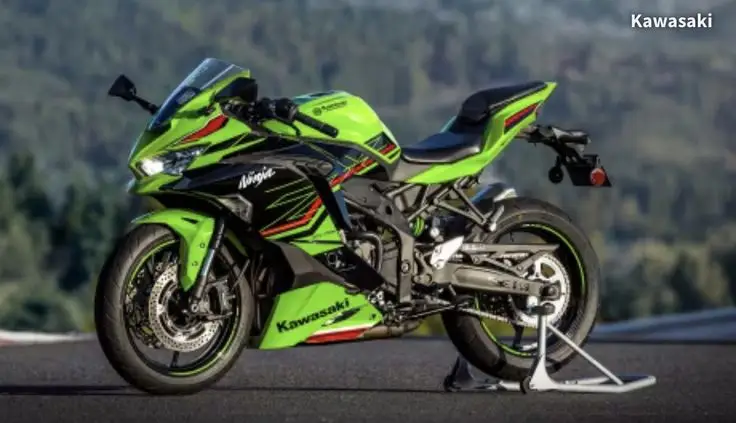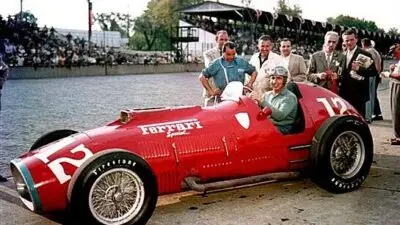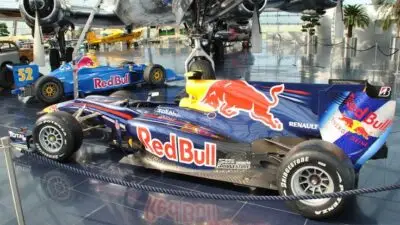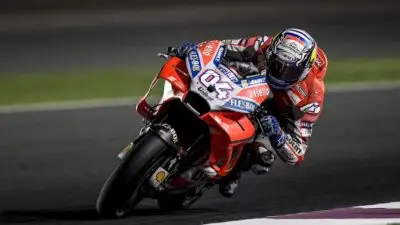The Kawasaki Ninja ZX-RR marked the Japanese manufacturer’s ambitious entry into the premier class of motorcycle racing during the early 2000s. The Kawasaki ZX-RR competed in MotoGP from 2002 to 2008 but never achieved a race victory during its eight-year campaign. This prototype racing machine represented Kawasaki’s return to grand prix motorcycle racing after years away from the top tier.

The ZX-RR’s journey through MotoGP tells a story of technical innovation, dedicated riders, and the challenges faced by manufacturers competing against established racing giants. From its debut appearance with Andrew Pitt at the end of 2002 to its final seasons, the bike underwent continuous development in pursuit of podium finishes.
This racing program brought together talented riders like Shinya Nakano, Randy de Puniet, and others who worked to extract maximum performance from the green machine. The ZX-RR’s technical specifications, race results, and lasting impact on Kawasaki’s racing heritage provide insight into the demands of competing at motorsport’s highest level.
Key Takeaways
- The Kawasaki ZX-RR competed in MotoGP from 2002-2008 without achieving a single race victory
- The bike featured innovative technical developments including a “big bang” engine and compact chassis design
- Notable riders like Shinya Nakano achieved podium finishes and helped establish Kawasaki’s presence in the premier class
Kawasaki Ninja ZX-RR MotoGP Debut and History
The Kawasaki Ninja ZX-RR made its MotoGP debut towards the end of the 2002 season with riders Andrew Pitt and Akira Yanagawa. Kawasaki’s premier class campaign spanned seven seasons until their suspension of factory activities in 2009.
Return to the Premier Class
Kawasaki returned to Grand Prix racing’s premier class after years away from the top category. The ZX-RR represented their commitment to the new 990cc four-stroke era that began in 2002.
The angular-looking machine first appeared at the Pacific Grand Prix at Motegi. Japanese rider Akira Yanagawa qualified 18th out of 22 riders but crashed after an engine failure.
Andrew Pitt replaced the injured Yanagawa for the remaining rounds. He achieved the ZX-RR’s first MotoGP finish at the Malaysian Grand Prix, though in 19th and last place.
The breakthrough came at Valencia where Pitt scored the ZX-RR’s first MotoGP points with twelfth place. This modest result marked the beginning of Kawasaki’s challenging MotoGP journey in the premier class.
MotoGP Entry Timeline
2003: The first full season began with Pitt and Garry McCoy as riders. McCoy scored Kawasaki’s best finish with ninth place at the wet French Grand Prix.
2004: New riders Alex Hofmann and Shinya Nakano joined the team. Kawasaki switched from Dunlop to Bridgestone tires. Nakano achieved the ZX-RR’s first podium with third place at the Pacific Grand Prix.
2005: Olivier Jacque delivered a stunning second place at the Chinese Grand Prix in wet conditions. This remains the closest a ZX-RR came to victory.
2006-2008: The team continued with various rider combinations including Randy de Puniet, John Hopkins, and Anthony West. De Puniet scored the ZX-RR’s final podium with second place at Motegi in 2007.
Team Management and Development
Harald Eckl managed Kawasaki’s MotoGP team from 2002 until November 2006. His departure marked a significant change in the program’s structure and direction.
Kawasaki split from Eckl due to his involvement with a competitor’s MotoGP activities, rumored to be Ilmor. The team moved operations in-house for 2007.
The restructuring created challenges in attracting top riders. The upheaval combined with questions about their new 800cc machine limited their options.
Michael Bartholemy served as competition manager during the later years. He secured John Hopkins for 2008-2009 and Marco Melandri for the planned 2009 season.
Kawasaki announced the suspension of factory MotoGP activities in January 2009 due to the worldwide financial crisis. The ZX-RR never achieved a Grand Prix victory during its seven-season campaign.
Technical Specifications and Innovations
The Kawasaki Ninja ZX-RR featured distinct technical phases with significant engine downsizing from 988cc to 798cc and advanced pneumatic valve systems. Bridgestone supplied exclusive racing tyres while the aluminum twin-spar chassis provided the foundation for MotoGP competition.
Engine Design and Performance
The Ninja ZX-RR underwent major engine changes during its MotoGP career. From 2002 to 2006, the bike used a 988cc inline four-cylinder engine producing over 240 bhp.
When MotoGP regulations changed, Kawasaki adapted with a smaller powerplant. The 2007-2008 models featured a 798cc four-stroke inline-four engine with reduced power output exceeding 200 bhp.
Key Engine Specifications:
| Period | Displacement | Power | Bore x Stroke |
|---|---|---|---|
| 2002-2006 | 988cc | 240+ bhp | 79mm x 50.4mm |
| 2007-2008 | 798cc | 200+ bhp | 74mm x 46.4mm |
The later engines incorporated a pneumatic valve system. This advanced DOHC setup with four valves per cylinder replaced traditional spring-operated valves for higher rpm capability.
Electronic fuel injection managed the fuel delivery system. The wet sump lubrication system used Elf racing oil specifically formulated for MotoGP competition.
Chassis and Aerodynamics
The ZX-RR used an aluminum twin-spar frame design throughout its production run. This lightweight yet rigid construction provided the necessary foundation for MotoGP racing demands.
Carbon fiber bodywork reduced weight while offering aerodynamic benefits. The bike’s overall length measured 2,090mm for early models and 2,080mm for later versions.
Suspension and Weight:
- Front: Inverted telescopic forks with hydraulic adjustable steering damper
- Rear: Unit-trak monoshock system
- Dry weight: Over 145kg (early models), 148kg (later models)
The wheelbase remained variable for setup adjustments. Seat height was fixed at 850mm across all model years.
Braking power came from dual 314mm carbon front discs with four-piston calipers. The rear used a single ventilated steel disc that downsized from 203mm to 200mm in later models.
Tyre Partnerships and Evolution
Bridgestone served as the exclusive tyre supplier for the Ninja ZX-RR throughout its MotoGP campaign. The partnership provided specialized racing compounds designed for premier class competition.
The bike ran 16.5-inch wheels front and rear. This size became standard across MotoGP during the ZX-RR’s era.
Bridgestone developed specific tyre compounds for different track conditions. The tyres needed to handle the bike’s power delivery while providing consistent grip through race distances.
The tyre partnership extended beyond just supply. Bridgestone engineers worked directly with Kawasaki’s team to optimize tyre performance for the ZX-RR’s unique characteristics and handling requirements.
Key Riders and Contributors
The Kawasaki ZX-RR’s MotoGP journey featured several notable riders who helped develop the bike from its 2002 debut through 2009. Shinya Nakano achieved the team’s first podium finish, while riders like Andrew Pitt, Garry McCoy, and Randy de Puniet contributed to the bike’s evolution during its eight-year campaign.
Shinya Nakano’s Impact
Shinya Nakano joined the Kawasaki team in 2004 and became the most successful rider on the ZX-RR. He secured the bike’s first podium with a third place at the Japanese Grand Prix that year.
Nakano’s riding style suited the ZX-RR’s characteristics better than previous riders. He provided valuable feedback to engineers about the bike’s handling and performance.
His experience helped establish Kawasaki as a competitive force in MotoGP. Nakano remained with the team for multiple seasons and continued to deliver strong finishes.
The Japanese rider’s technical knowledge proved crucial for bike development. He worked closely with Kawasaki engineers to improve chassis setup and engine performance.
Influential Riders and Testers
Andrew Pitt and Akira Yanagawa were the debut riders who brought the ZX-RR to MotoGP in late 2002. Pitt continued into 2003 alongside Garry McCoy for the first full season.
Key Contributors:
- Andrew Pitt: Australian rider who helped launch the program
- Garry McCoy: Brought sliding technique and setup expertise
- Alex Hofmann: Served as test rider and occasional wildcard entry
- Randy de Puniet: Joined later in the program with strong technical feedback
- Anthony West: Contributed as development rider
McCoy’s unique sliding style provided different setup directions for the engineers. His aggressive riding helped identify the bike’s limits and handling characteristics.
Hofmann’s role as test rider proved vital for development between races. His consistent feedback helped refine the ZX-RR’s performance package.
Team Structure and Support
Kawasaki built a dedicated MotoGP team structure around the ZX-RR program. The team featured experienced crew chiefs and technical staff from both Japan and Europe.
The engineering team included specialists in chassis development, engine tuning, and electronics. Japanese engineers worked directly with European-based crew members.
Team management focused on creating a stable environment for riders and technical staff. This approach helped maintain consistency during the challenging development years.
Team Elements:
- Factory support from Kawasaki Japan
- European-based race team operations
- Dedicated test team for development
- Experienced crew chiefs for each rider
The support structure evolved throughout the program’s duration. Later seasons featured more integrated communication between factory engineers and trackside staff.
Major Grand Prix Highlights
The Kawasaki ZX-RR achieved its most memorable moments at specific circuits, with breakthrough podium finishes coming primarily at the Japanese Grand Prix and select international venues. The bike’s competitive performances peaked between 2004 and 2007 across various challenging circuits.
Japanese Grand Prix Breakthroughs
The Japanese Grand Prix delivered the ZX-RR’s first major success when Shinya Nakano secured third place in 2004. This podium finish marked a turning point for Kawasaki’s MotoGP program.
Three years later, Randy de Puniet earned second place at the Japanese Grand Prix in 2007. This result represented one of the bike’s strongest performances during its racing career.
The Japanese circuit consistently brought out the best in the ZX-RR. Home advantage and track familiarity helped Japanese riders and the Kawasaki team optimize their setup for competitive results.
Podiums at International Circuits
The ZX-RR claimed podium positions at three major international venues during its prime years. Olivier Jacque finished second at the Chinese Grand Prix in 2005, demonstrating the bike’s capability on diverse track layouts.
At the Dutch TT in 2006, Shinya Nakano secured another second-place finish. The demanding Assen circuit tested the ZX-RR’s handling and power delivery through its mix of fast sections and technical corners.
These international podiums proved the ZX-RR could compete effectively beyond its home market. The bike showed particular strength on circuits that rewarded precise handling and consistent lap times.
Notable Race Performances
The 2008 season brought challenges as the ZX-RR struggled with front-end feel and rear traction issues. John Hopkins achieved two fifth-place finishes in Portugal and Anthony West at Brno, representing the bike’s best results that year.
Marco Melandri’s fourth-place finish in 2009 with the Hayate racing team marked the ZX-RR’s final competitive showing. Despite handling complaints, Melandri extracted respectable performance from the aging platform.
The bike’s eight-year MotoGP campaign without a victory ended when Kawasaki withdrew from the championship after 2008. Forward Racing continued with the ZX-RR in 2009 before the project concluded permanently.
Competitive Performance in the MotoGP World Championship
The Kawasaki ZX-RR competed in MotoGP from 2002 to 2009 without achieving a race victory. The bike secured multiple podium finishes and showed steady development progress throughout its championship campaigns.
Constructors’ and Teams’ Standings
Kawasaki consistently finished in the lower half of the constructors’ championship during its MotoGP tenure. The manufacturer’s best seasons came in the mid-2000s when the ZX-RR began securing regular points finishes.
The team’s constructors’ standings reflected the challenges faced by a returning manufacturer. Kawasaki had been absent from Grand Prix racing for 20 years before returning to MotoGP in 2002.
Key Championship Positions:
- 2004-2006: Mid-pack constructors’ standings
- 2007: Improved performance with multiple podiums
- 2008: Declining results led to withdrawal announcement
The manufacturer struggled to match the consistency of Honda, Yamaha, and Ducati. Limited resources and development time hindered competitive progress against established rivals.
Season-by-Season Results
The ZX-RR’s competitive journey showed gradual improvement before declining in its final years. Shinya Nakano achieved the bike’s first podium with third place at the 2004 Japanese Grand Prix.
Notable Podium Finishes:
- 2004: Third place – Shinya Nakano (Japan GP)
- 2005: Second place – Olivier Jacque at the Chinese Grand Prix
- 2006: Second place – Nakano at Dutch TT
- 2007: Second place – Randy de Puniet (Japan GP)
The 2008 season marked a significant downturn. John Hopkins and Anthony West achieved only fifth-place finishes as the best results. Both riders complained about front-end feel and rear traction issues.
Kawasaki announced its MotoGP withdrawal during the 2008 season. The 2009 season saw Marco Melandri ride for the privateer Hayate team with limited factory support.
Development Challenges
The ZX-RR faced significant technical hurdles throughout its development cycle. Engine regulation changes in 2007 forced a reduction from 990cc to 800cc displacement, requiring extensive redesign work.
Technical Specifications by Era:
- 2002-2006: 988cc inline-four, 240+ bhp
- 2007-2008: 798cc inline-four, 200+ bhp
The bike suffered from handling issues including poor front-end feeling and inadequate rear traction on corner exit. These problems persisted across multiple seasons despite ongoing development efforts.
Budget constraints limited Kawasaki’s ability to compete with larger manufacturers. The global financial crisis of 2008-2009 ultimately forced the manufacturer’s withdrawal from the championship.
The ZX-RR’s aluminum twin-spar frame and electronic fuel injection represented competitive technology. However, the bike never achieved the aerodynamic efficiency and electronic sophistication of its main rivals.
Legacy of the Kawasaki Ninja ZX-RR in MotoGP
The Kawasaki ZX-RR left MotoGP in 2009 after eight years without a championship win, but its impact on racing technology and Kawasaki’s reputation endures. The bike’s withdrawal marked the end of an era while its technical innovations influenced future motorcycle development.
Retirement from the Sport
Kawasaki announced its withdrawal from MotoGP at the beginning of 2009 due to the global economic crisis. The financial demands proved too steep for the manufacturer to justify continued participation.
The ZX-RR program required substantial investment with minimal return. Operating costs exceeded €10 million annually, while some championship teams spent over €15 million per season.
Key factors in retirement:
- Global economic downturn in 2008-2009
- Limited competitive success over eight seasons
- High operational costs versus marketing benefits
- Strategic shift toward World Superbike Championship
The decision ended Kawasaki’s longest stint in premier motorcycle racing. The manufacturer had previously competed in Grand Prix racing but took a 20-year break before returning in 2002.
Marco Melandri, a former MotoGP championship runner-up, was signed for the final 2009 season. His arrival couldn’t prevent the program’s closure despite his proven track record.
Influence on Race Technology
The ZX-RR featured several technical innovations that influenced motorcycle development. Its radical design pushed boundaries in aerodynamics and engine configuration during the early MotoGP era.
Kawasaki engineers developed unique solutions for the 990cc and later 800cc formula changes. The bike incorporated advanced materials and construction techniques that filtered down to production motorcycles.
Technical contributions:
- Frame design: Innovative chassis geometry concepts
- Engine mapping: Advanced fuel injection systems
- Aerodynamics: Early wind tunnel testing applications
- Electronics: Traction control and data acquisition systems
The ZX-RR’s development helped establish modern MotoGP prototype standards. Its engineering challenges provided valuable data for Kawasaki’s street bike division.
Racing teams and manufacturers studied the bike’s successes and failures. These lessons contributed to improved performance across the motorcycle industry.
Lasting Reputation
The ZX-RR achieved its first podium finish in 2004 when Shinya Nakano placed third at the Japanese Grand Prix. This milestone represented Kawasaki’s peak MotoGP performance.
Despite eight years without a single win, the program maintained respectability in MotoGP’s competitive field. The bike regularly scored points and occasionally challenged for podium positions.
Notable achievements:
- First podium: 3rd place, 2004 Japanese GP
- Second-place finish at 2005 Chinese GP
- Consistent point-scoring performances
- Development of competitive riders
The ZX-RR’s legacy continues through Kawasaki’s World Superbike success. The manufacturer redirected its racing focus after leaving MotoGP, achieving multiple championships with Jonathan Rea and Tom Sykes.
Kawasaki has officially ruled out a MotoGP return, citing financial constraints and strategic alignment with production-based racing. The ZX-RR remains the company’s final chapter in premier prototype racing.
Frequently Asked Questions
The Kawasaki Ninja ZX-RR featured different engine configurations throughout its racing career, with displacement ranging from 798cc to 988cc depending on the regulation period. The bike competed in MotoGP from 2002 to 2009 before Kawasaki withdrew from the championship due to financial constraints.
What are the specifications of Kawasaki’s MotoGP motorcycle?
The Kawasaki Ninja ZX-RR specifications varied between two main periods. From 2002 to 2006, the bike used a 988cc inline four-cylinder engine with DOHC and four valves per cylinder.
The earlier version produced over 240 horsepower and weighed more than 145 kg. It featured an aluminum twin-spar frame with inverted telescopic forks and a monoshock rear suspension.
From 2007 to 2008, regulations required a smaller 798cc engine. This version generated over 200 horsepower with a pneumatic valve system and weighed more than 148 kg.
Both versions used a six-speed cassette-type gearbox with electronic fuel injection. The bike featured carbon fiber bodywork and Bridgestone tires throughout its racing career.
How much does the Kawasaki ZX-RR cost?
The Kawasaki ZX-RR was never sold to the public as a commercial motorcycle. It was built exclusively as a factory MotoGP prototype for professional racing teams.
Factory MotoGP bikes typically cost several hundred thousand dollars each to develop and build. The exact production costs for the ZX-RR were never publicly disclosed by Kawasaki.
These machines required extensive support from factory technicians and specialized parts. Only professional racing teams had access to lease or purchase these motorcycles during the racing seasons.
What is the top speed of the Kawasaki ZX-RR?
The top speed of the Kawasaki ZX-RR depended on the engine configuration and racing regulations. The 988cc version from 2002-2006 could exceed 320 km/h (200 mph).
The smaller 798cc version used from 2007-2008 had a lower top speed exceeding 300 km/h (190 mph). These speeds were achieved on long straights at various MotoGP circuits during race conditions.
Top speed varied based on aerodynamic setup, gearing, and track conditions. Teams adjusted the bike’s configuration for each circuit to balance straight-line speed with cornering performance.
What displacement does the Kawasaki ZX-RR have?
The displacement of the Kawasaki ZX-RR changed during its racing career due to regulation updates. From 2002 to 2006, the bike used a 988cc four-stroke inline-four engine.
MotoGP regulations changed in 2007, requiring all manufacturers to use smaller engines. Kawasaki reduced the displacement to 798cc for the 2007 and 2008 seasons.
The bore and stroke measurements also changed between configurations. The 988cc version had 79mm bore x 50.4mm stroke, while the 798cc used 74mm bore x 46.4mm stroke.
In which years did Kawasaki participate in the MotoGP Championship?
Kawasaki participated in the MotoGP Championship from 2002 to 2009. The ZX-RR made its debut toward the end of the 2002 season with riders Andrew Pitt and Akira Yanagawa.
Kawasaki announced its withdrawal from MotoGP during the 2008 season. The company ceased factory support after that year due to financial difficulties.
Forward Racing took over the ZX-RR program in 2009 under the Hayate racing team name. Marco Melandri rode the bike during this final season before the program ended completely.
What were the reasons behind Kawasaki’s withdrawal from MotoGP?
Kawasaki withdrew from MotoGP primarily due to financial constraints and lack of competitiveness. The company announced its retirement during the 2008 season amid global economic pressures.
The ZX-RR struggled to achieve race wins throughout its career. Despite achieving several podium finishes, the bike never won a single MotoGP race during its eight-year campaign.
Performance issues included poor front-end feeling and lack of rear traction on corner exits. Riders John Hopkins, Anthony West, and Marco Melandri all reported similar handling complaints with the motorcycle.










